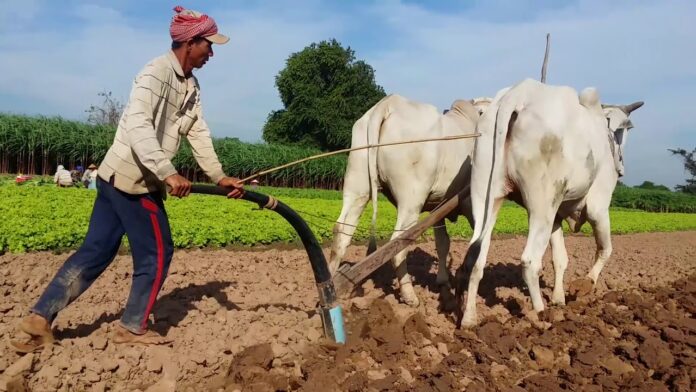Soil tillage is the agricultural preparation of soil by mechanical agitation of various types, such as digging, stirring, and overturning the soil – Wikipedia.
We do not know tillage to increase yields. But rather it has negative impacts on food production. Particularly on our soils in the long-term.
Do you know the negative impacts?
The following reasons and explanations on soil tillage will help you understand. The alternative is conservation agriculture.
Types of Soil Tillage
Before we go to the problems of tillage, let us look at the 3 basic types of tillage. There are various derivatives of tillage based on the 3 basic types of tillage depending on the degree of soil disturbance and residue.
1. Conventional Tillage
Conventional tillage practice is where you loosen the soil by turning it over. You achieve this either manually with hoes or mechanically with a plough or disc. This exposes the soil to erosion by wind or rain. In areas where they use only simple tools like hoes, land preparation is done by the “slash and burn” method before ploughing.
2. Conservation Tillage
Generally, with this method, you try to reduce the disturbance of the topsoil to prevent erosion and to enrich the soil. You can achieve this by allowing on the field previous season’s crops residues, before and after planting the next crop.
3. No-till
No-Till is the kind of conservation tillage, where there is no (or very little) disruption of the topsoil. In this case, even mechanical planters are designed and operated to minimally or not to disrupt the soil. You maintain soil cover to prevent erosion, loss of soil moisture etc.
Negative Effects of Soil Tillage
1. Soil Erosion
Tillage causes the soil to break down into smaller particles. The wind easily blows away these particles. Again, heavy rains wash the particles as topsoil to lower elevation. In these cases, nutrients are either blown away or washed away. They easily leach away from the reach of roots. Then, you would need more fertilizer to get consistent yields.
READ ALSO: SOIL CONSERVATION: HOW TO MAINTAIN SOIL FOR SUSTAINABLE CROP PRODUCTION
2. Reduction of the number of soil organisms
Soil organisms are very vital to organic matter decomposition. Their activities are important to soil improvements. In very simple terms, tillage displaces and exposes soil organism to air and direct sunlight. Soils with low soil organisms undergo low rates of decomposition, Therefore, the amounts of soil nutrients reduce.
3. Loss of nitrogen
Microorganisms, during the breakdown of organic matter, release nitrogen, Nitrogen is an essential plant nutrient for plant growth. Tillage releases the stored nitrogen in the soil whiles exposing the microorganisms. You would then need more fertilizer to make up for the loss. This increases the cost of production.
READ ALSO: 10 BENEFITS OF COVER CROPS
4. Soil compaction
After continuous tillage and exposure to several impacts, the soil forms a hardpan just below the depth of tillage. This hardpan prevents soil water drainage and root development. Moreover, soil compaction prevents root development and decreases the plant’s ability to take up nutrients and water. Without adequate and timely rains and correct fertilizer application, it reduces yield. In wet seasons, it reduces soil aeration. This results in loss of nitrate-nitrogen to the atmosphere. Also, soil compaction can induce nitrogen and potassium deficiency.
READ ALSO: NO-TILL (CONSERVATION) FARMING VS CONVENTIONAL TILLAGE AGRICULTURE
5. An additional cost of production
Soil tillage is an additional cost to production. It is expensive. Consider the cost of fuel and maintenance of machinery. If manual, the cost of labour. All these cases would need extra fertilizer in addition to other costs.
READ ALSO: 6 BASIC SOIL PROBLEMS AND RECOMMENDED SOLUTIONS IN AGRICULTURE
6. Environmental Damage
As stated before, heavy tillage exposes soils to both water and wind erosion. After long term use of chemicals, the chemicals residues build up in the soil. When such soils are washed or blown into streams, rivers and ponds, they pollute the water. Then, fish and wildlife are also at risk when soil particles are washed into waters clouding them.
7. Not sustainable in the current climate change
Soil tillage is not a sustainable agricultural practice. Tillage makes the soil non-productive for food production after a period. In addition, we do not know of any proof that it increases yields of crops.
To ensure long-term production of food, we must adopt conservation agriculture. This reduces the cost of production, increases yield, improves soil and environment. It is a major solution to climate change.


